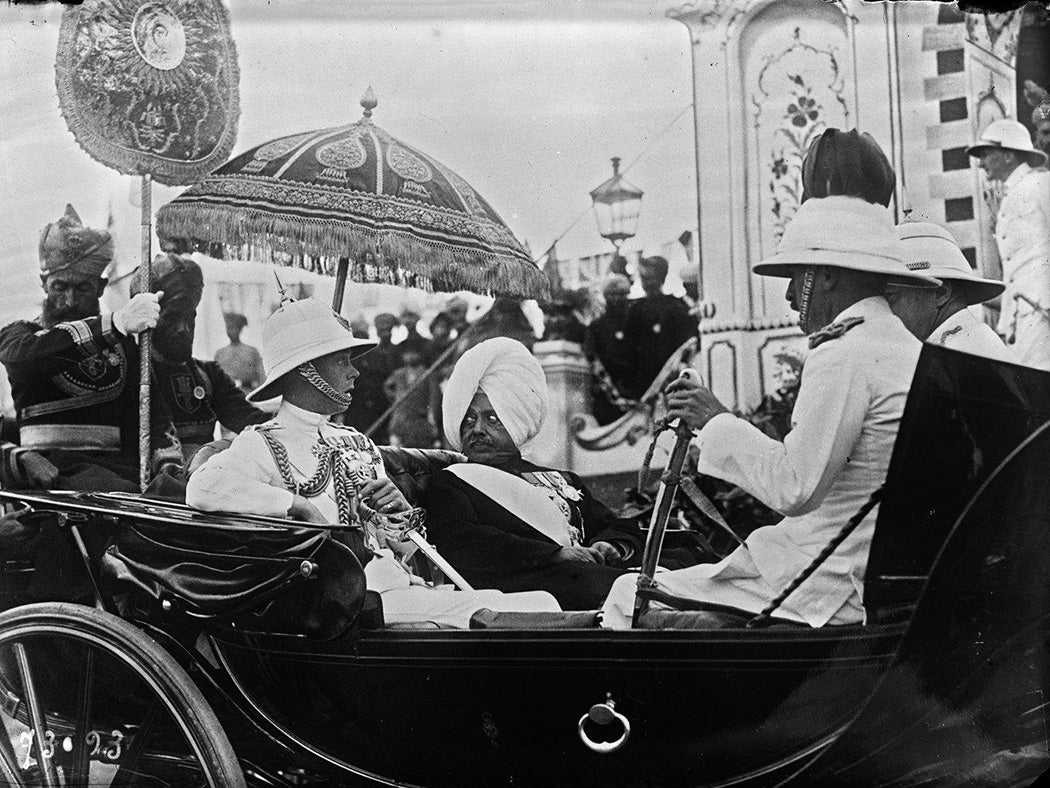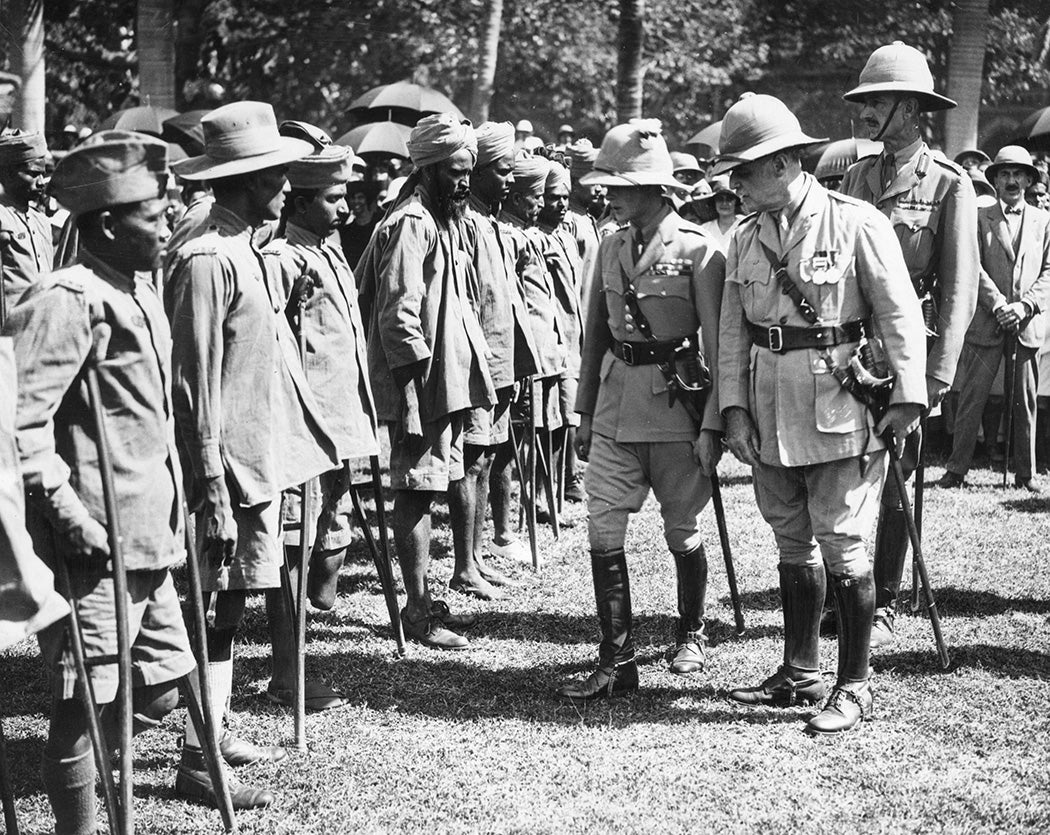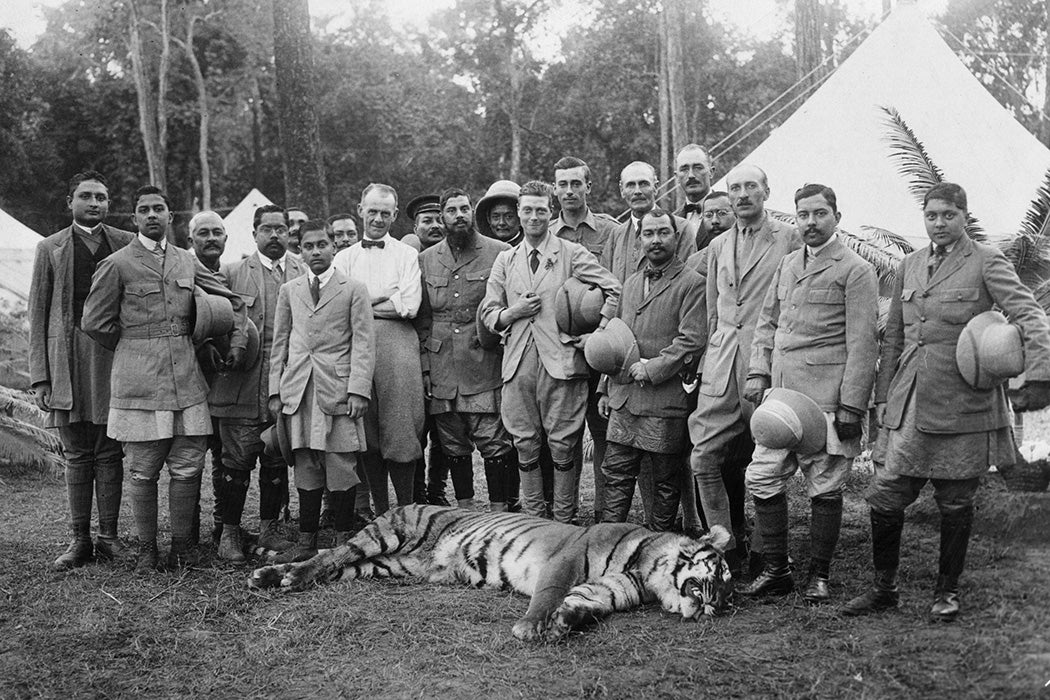When the young Edward, Prince of Wales, landed at Bombay in 1921, he could be forgiven for thinking that all was well in India. Before a crowd well-stocked with government officials and army officers, he delivered a textbook speech attesting to his desire to “appreciate at first hand all that India is, and has done, and can do.”
“I want you to know me, and I want to know you,” he said.
Weekly Newsletter
But not far from his highly staged landing, trouble was brewing. That same day, Bombay saw the arrival of Mahatma Gandhi, the leader of India’s burgeoning non-cooperation movement. While the Prince paraded through the city center, Gandhi presided over a bonfire of foreign cloth in the city’s suburbs, a symbolic rejection of British imports to India.
As loyalists filtered home from the Prince’s welcome parade, they ran into the volunteers of Gandhi’s Congress movement. Violence followed. Those gathered threw stones at European motorcades and burned minority businesses. Amid the rioting, police egged on, even armed, Anglo-Indian loyalists. For the next three days, in the words of one local paper, Bombay was gripped by “an unprecedented outbreak of racial and political violence.” Fifty-three people would die; more than 400 would be wounded.
“It does not speak well… that there should be banquets and balls in one part of Bombay in honour of the Prince [while]… there were murders and arson in the other,” read one local column.
These events, as documented by local newspapers, were meticulously recorded by bureaucrats in weekly summaries for British and Indian officials, contained in JSTOR’s South Asian Open Archives. Over the course of the five months of the Prince’s sojourn in India, these records show how his tour devolved into one of the greatest ever failures of royal diplomacy. Designed by Anglo-Indian officials to consolidate support for the British Raj, it instead gave fuel to the fire of a long-smoldering conflict with Gandhi’s movement for self-government—and revealed the inadequacy of the monarchy to counter it.
Recognition for India
The Prince’s tour was originally conceived as an opportunity for the monarchy to recognize the colonies that paid heavily for the First World War, in blood and coin. In India alone, nearly 1.4 million people joined the war effort, some forcibly conscripted, and roughly 70,000 died on foreign battlefields.
But the country paid in more than bodies. In an article in Social Scientist, the political economist Amiya Kumar Bagchi notes how, during the war, Britain claimed an ever-greater share of India’s harvests, worsening famines and the impacts of cholera and flu outbreaks. Professionals who could help manage the crisis—doctors, nurses, and engineers—were taken to the front, where they were treated, quite literally, as second-class citizens.
As the war wound to its conclusion, a growing number of Indian leaders demanded recognition for their sacrifices in the form of self-government—and equal standing with Britain’s other overseas dominions. But instead of liberation, Indians were subjected to even greater repression. The British government advanced only piecemeal reforms that would keep new elected bodies under the control of British governors. When met with protest, Indian authorities arrested and deported dissidents, including Gandhi, without trial.
Then, in April 1919, in the northern town of Amritsar, a peaceful crowd protesting the arrest of two independence leaders was penned in and gunned down by British troops in one of the darkest days of Indian history. More than 300 were killed; a final count of the casualties was never properly performed. The scholar W. H. Roberts, writing in 1923, said that the inquest that followed “pleased no one.” Britain never apologized for the massacre, and military leadership was never penalized.
The Prince and the Buffoon
The Prince of Wales was originally to begin his tour amid the worst of the fallout from Amritsar. But fatefully, exhausted by his tour of Australia, he postponed his trip to India. The king’s uncle, the Duke of Connaught, traveled in his place to open the new public assemblies created by the reforms of 1919. The Duke’s tour, in early 1921, was an unmitigated disaster. Costing an eye-popping 2.7 million rupees (the equivalent of more than $10 million today), the local press ridiculed the Duke’s speeches, called him a “laughing-stock,” and claimed the tour “lower[ed] the prestige of the Royal Family in the eyes of the world.” The Duke himself reported feelings of “bitterness and estrangement” wherever he went. “The shadow of Amritsar has lengthened over the fair face of India,” he wrote.

Yet the Prince of Wales was due to repeat the journey in less than a year. When the public learned of the estimated cost—some ten million rupees ($40 million today), with 1.6 million spent on policing alone—the press exploded with outrage. “Such folly as that of the bureaucracy in this country would have universally been condemned in another age,” read the Bombay Chronicle.
“What right have the authorities to ask people to make merry… when the country is in the grip of famine?” read one periodical. “Such opposition [to the expense of a royal tour] had never been expressed before by the people,” read another. Independence leaders and governors alike pleaded with the Prince to cancel his tour. Moved to respond just days before his departure, he instead implored India’s leaders to redirect the spending to “the alleviation of poverty and sufferings.”
“It is obvious that the Government of India… do not think that the royal suggestion is addressed to them,” the Bombay Chronicle wryly recorded.
But Indians opposed the tour on more than cost alone. The press accused Raj officials of using the pomp and pageantry of a royal visit “to cover their own misdeeds.” For a previous generation of Indians, it might indeed have worked. In the words of historian Miles Taylor, “there is nothing like a visiting royal to quell republicanism or at least to confuse the issues.” Taylor notes that Queen Victoria and her progeny regularly embarked on tours of the subcontinent, armed with “boons” in the form of long-sought legal or political reforms, unifying the nation with royal pageantry.
“Victoria was celebrated as the mother protector of India, its princes, and its people,” Taylor writes. “Some of this was orchestrated by the Indian government, mostly it was not.”
But since the war, Taylor writes, successive British governments had tried to minimize the role of the monarchy in the administration of the empire. By the time of the Prince’s visit, the Indian press could plainly declare that “the Emperor and the buffoon stand on the same level as regards real power.”
“The exploded doctrines of the divine spark in kings… are outgrown and jar even on the ears of proverbially loyal Indians,” one columnist wrote.
Empty Streets
As if to prove that statement, the Prince arrived in Bombay amid calls for a “total boycott” from Gandhi’s Congress Party. On the day of his arrival, hartals—widespread closures mimicking a day of mourning—paralyzed dozens of towns across India.
Similar strikes followed the royal tour to Lucknow, Benares, and Allahabad. When the Hindu University conferred an honorary degree on the Prince, “practically all the students refused to be present,” Edward wrote to his father, King George V. “It was quite humorous the way the university authorities tried to ‘kid’ me by filling up the empty students’ seats with high school boys, boy scouts & Europeans.”
In Allahabad, the streets were so empty even the government’s lavish spending could not hide the disinterest of the locals from the foreign press. Along the “festooned and garlanded” parade route, they reported, barely 1,000 people came out to cheer the prince.
Alongside the Prince came harsh repressions. “Every place visited by the Prince will be found… to be in a state of quasi-military dictatorship,” the Bombay Chronicle reported. After the riots in Bombay, the government resolved to act against Gandhi’s movement “on a more drastic and comprehensive scale than has hitherto been attempted.”
“Prohibition of meetings, searches, arrests and imprisonments have become the order of the day,” the Hindu reported in December. By the end of 1921, some 20,000 political prisoners filled India’s jails. “The question before the people now is not which of their leaders have been arrested, but which of them have not yet been arrested,” one paper wrote.
Shepherded from official to official under heavy police escort, Prince Edward despaired at his experience of India. “I am hardly ever allowed even to drive through the bazaars and native quarters of the cities,” he wrote. “The crowds, if there ever are any… are herded together into pens like sheep and guarded by constables.”
While the Prince sulked, India’s viceroy, Lord Reading, was hurriedly trying to rescue the rest of the Royal Tour. In mid-December, he proposed a meeting with Gandhi on the condition that he call off a hartal planned for the Prince’s arrival in Calcutta. Skeptical of their intentions, Gandhi ultimately refused.
Violence at Chauri Chaura
When the Prince arrived in Calcutta on Christmas Eve, in the words of the London Times, “it was like a city of the dead.” The Time reported that “[f]rom early morning, Congress… volunteers appeared on the streets, and, it is no exaggeration to say, took possession of the whole city. The bazaars were closed, trains were stopped. Taxis were frightened of the streets.”

But the emptiness of Calcutta was preferable to what was to come. In Madras, a hartal again turned into general rioting. Thousands were arrested. The Prince, despondent, departed for several weeks to the palaces of India’s maharajas, hunting tigers and playing polo to pass the time. Behind him, India’s non-cooperation movement was devolving into violence. On February 4, a mob in Chauri Chaura, a small town in Uttar Pradesh, stormed a police station and burned it to the ground, killing 22 policemen inside.
The killings, which Gandhi’s son likened to Amritsar, turned moderate opinion against the non-cooperation movement. Gandhi, appalled by the violence of the past several months, suspended the movement’s activity less than a week later.
Trading letters with his father from the palace at Agra, Prince Edward declared the trip “all rather a waste.” George V. wrote in reply: “I can’t understand why Gandhi, the man who is causing all the trouble, has not been arrested and deported. Are the Government frightened of him or what?”
By March 10, enough people in the government apparently overcame their fears. Gandhi was arrested, pleaded guilty to sedition, and was sentenced to six years imprisonment on March 18. The Prince left India for Sri Lanka the following day.
A New Pageantry
Bookended as it was by the rapid rise and fall of Gandhi’s non-cooperation movement, the Prince’s tour of India added fuel to a revolution in politics already underway in India.
The historian Hilary Sapire, writing in History Workshop Journal, notes “a fundamental shift that had begun to take place within Indian nationalist politics since the First World War,” from the “pomp of monarchical imperialism” to the “alternate political pageantry” of boycotts, bonfires, and hartals.
And as the historian D.A. Low documented, the Prince arrived in an India where officials still believed the spectacle of a royal tour could drown out the cries for independence. But—in no small part due to his presence—he left a country, in the words of one periodical, “half dead on account of the absence of political liberty.”
Any hope that Indians held that the monarchy could again deliver a “boon” in the form of the reforms they sought was crushed by the sheer scale of oppression. Following his own royal tour, the King said he left India “a legacy of hope.”
“What will the Prince say when he leaves India?,” the New Times asked at the height of the arrests. “As a result [of his visit]… some of the greatest of India’s political leaders are in jail.” But the tour also revealed something else—the strength of India’s desire for self-government. Though it would be decades until independence was fully achieved, the editors of the Krishna Patrika put it succinctly.
“Whatever may be the reason for which the Government have invited the Prince of Wales,” they wrote, the royal tour had ultimately “proved a blessing… It is hard to find an easier means for measuring the power and [extent] of the non-cooperation movement.”
Explore some of the primary sources the author used to research this piece in the South Asian Open Archives on JSTOR.
Support JSTOR Daily! Join our new membership program on Patreon today.







